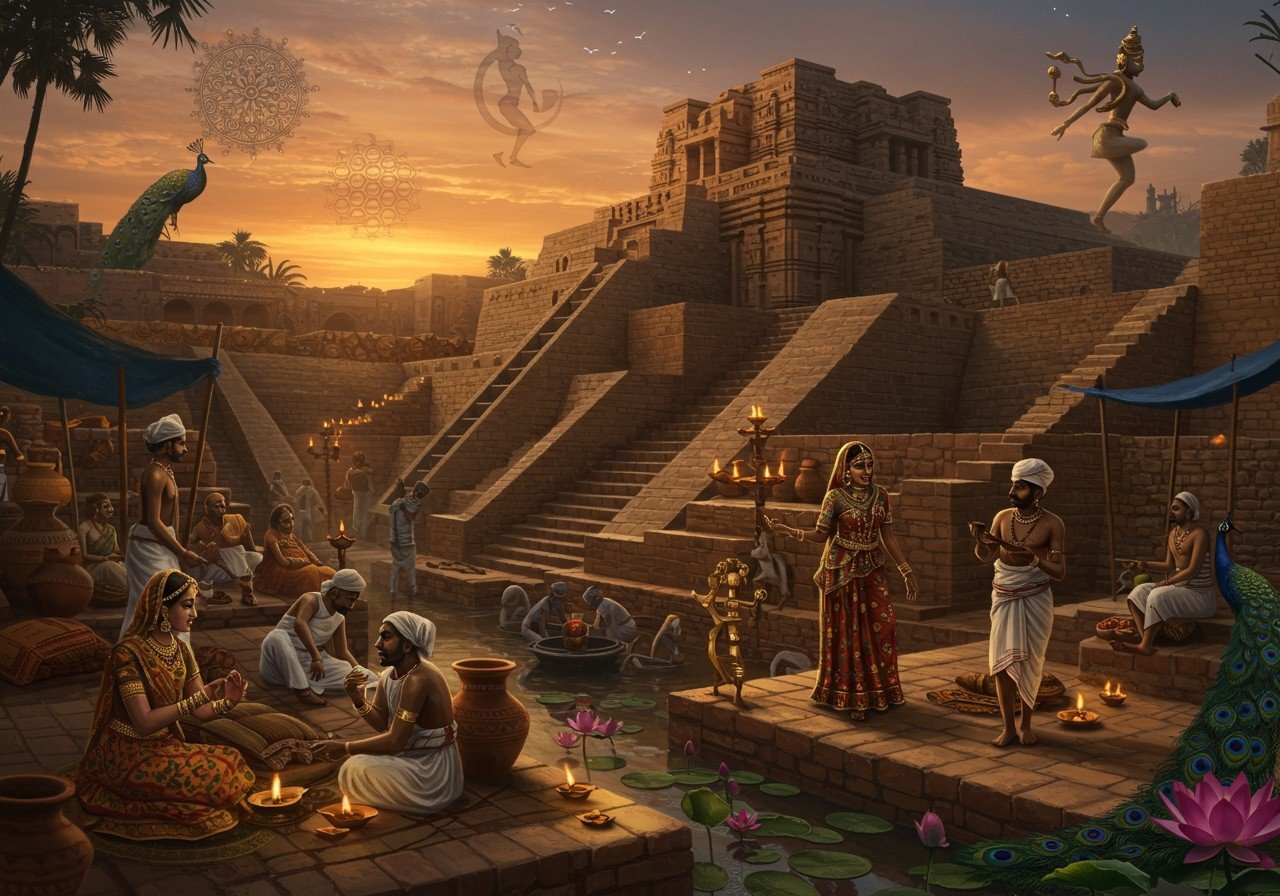Historical Background
Origins and Timeline

The Indus Valley Civilization, the largest of the four ancient civilizations, thrived from c. 7000 to c. 600 BCE, spanning 1,260,000 square kilometers across India, Pakistan, and Afghanistan. Emerging from neighboring villages, it adopted Mesopotamian irrigation techniques to cultivate the fertile Indus River valley and manage its annual floods. Its discovery in the 1920s revealed remnants of ancient cities, showcasing a sophisticated society. Excavations unveiled a vast civilization across present-day Pakistan and India, with the Sindh region playing a pivotal role. The civilization’s history is categorized into the Early Harappan, Mature Harappan, and Late Harappan periods, before its eventual decline and disappearance.
Urban Planning and Architecture
Advanced City Layout and Construction
Renowned for its advanced urban planning, the civilization boasted cities like Mohenjo Daro and Harappa, featuring grid-like layouts with streets oriented north-south and east-west. These cities possessed complex drainage systems for hygiene. Buildings, constructed with standardized baked bricks, included houses, public baths, and granaries. The Citadel, a raised urban area, likely housed significant structures.
Society and Economy
Social Structure and Economic Activities
Evidence suggests a social hierarchy based on housing and burial practices. Agriculture was the backbone of the economy, with crops like wheat, barley, and cotton being cultivated. Trade flourished within the civilization and with neighboring regions. Crafts like pottery, metallurgy, and bead-making were prevalent. Standardized weights and measures facilitated trade transactions.
Culture and Religion
Artifacts and Beliefs
Artifacts such as seals and figurines provide glimpses into the cultural and religious practices of the Indus Valley people. The absence of large religious structures suggests diverse worship practices. The Great Bath in Mohenjo Daro may have served ritualistic purposes. Animal and mythical creature depictions in their art reveal symbolic meanings. A potential mother goddess cult indicates their religious beliefs.
Language and Script
The Enigmatic Script
The civilization employed a unique script, found on seals, pottery, and other artifacts, which remains undeciphered, adding to the mystery surrounding this ancient civilization. Theories propose connections between this script and later South Asian writing systems. This undeciphered script continues to intrigue researchers, hindering a complete understanding of their language and communication.
Notable Sites
Discovering Mohenjo Daro and Harappa
Mohenjo Daro, located in Sindh on the Indus River banks, is a crucial site. Its well-preserved urban layout provides insights into their advanced planning. Harappa, another major city, significantly contributes to our understanding. Other sites like Lothal, Dholavira, and Kalibangan offer further glimpses into their daily lives. You can learn more about Varanasi’s sacred sites and their significance in Hinduism here.
Legacy and Influence
Lasting Impact on Modern Culture
The Indus Valley Civilization’s legacy endures in South Asian culture, influencing later urban development concepts. Ongoing research strives to comprehend its contributions to world history. Preservation efforts aim to ensure future generations learn about this remarkable era. Explore more about the global reach of Hinduism and its diverse traditions here. You can delve into the complete history and origin of Hinduism here.
Poojn.in: Connecting You with Ancient Traditions
At Poojn.in, we bridge the gap between you and the rich heritage of the Indus Valley Civilization. We offer a curated selection of authentic puja items and spiritual products that resonate with the reverence and wisdom of this ancient culture. Whether you are seeking to deepen your understanding of ancient rituals or create a sacred space in your home, our collection provides a tangible link to the past. Explore our range of products, including:
- Idols and Murtis: Discover exquisitely crafted idols of deities revered during the Indus Valley era, allowing you to honor their legacy. Lord Shiva Murti is a great example of the craftsmanship available.
- Incense and Fragrances: Enhance your spiritual practice with traditional incense and fragrances, creating an atmosphere of serenity and devotion. Mangalam Camphor is a popular choice for purification rituals.
- Puja Accessories: Find all the essential accessories for performing traditional puja ceremonies, ensuring authenticity and reverence in your practice.
Visit Poojn.in today and embark on a journey of cultural exploration and spiritual connection.
Conclusion
The Indus Valley Civilization stands as a testament to human ingenuity. Its urban planning, economic prosperity, and rich culture showcase a society ahead of its time. Continued research and preservation efforts ensure its legacy inspires future generations. Explore the significance and symbolism of Hindu temple architecture here.


